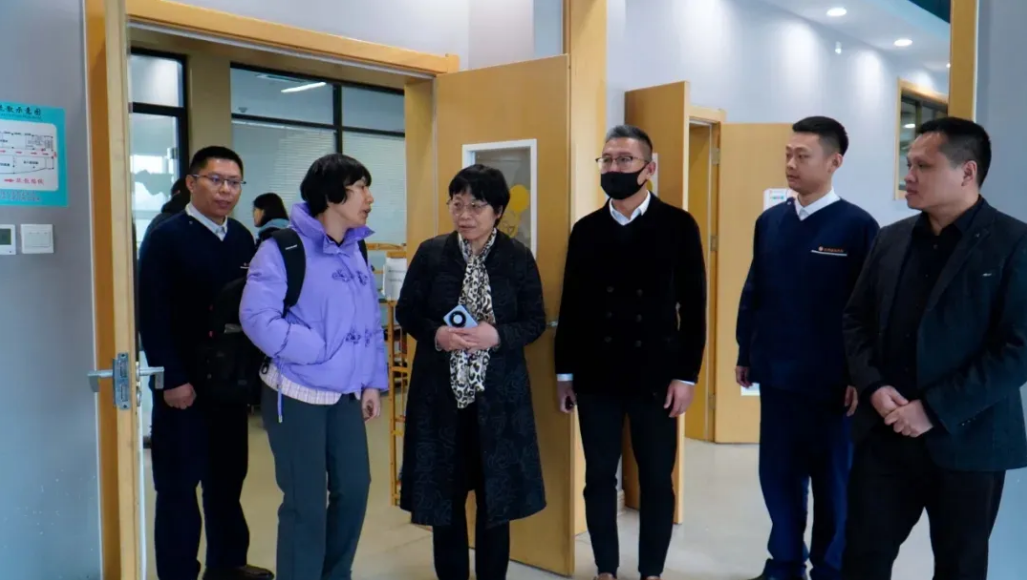In the spring of 2024, Dr. Wu Xiaobing, founder of Beijing GeneCradle Technology Co., Ltd. (hereinafter referred to as "GeneCradle" or "the Company"), Director Xing Huanping of Beijing Meir SMA Care Center (hereinafter referred to as "Meier"), and members of the company's team formed a visiting team to visit a number of rehabilitation hospitals in Shandong and Anhui. The purpose of this visit was to gain an in-depth understanding of the rehabilitation status and training needs of SMA patients in the center, as well as the basic conditions and rehabilitation concepts of each rehabilitation hospital.
During this Spring Day Charity Event, the visiting group visited Shandong Linyi Shengbo Rehabilitation Hospital and Anhui Chuzhou Suchu Hospital Rehabilitation Center, and visited and saw the SMA patients who were undergoing rehabilitation training in the hospital, accompanied by the staff of the two rehabilitation hospitals. During the visit to the hospital's rehabilitation department, the hospital introduced the department's characteristic technical projects to the visiting group, and learned in detail about the hospital's child rehabilitation development process and rehabilitation concepts. Through this field exchange, the company team and Meier organization members visited the patients and parents to participate in rehabilitation training after gene therapy, and also had stronger confidence in the young patients' return to their families and integration into society in the future.
Ms. Xing from the Meier Organization said: "The combination of medication and rehabilitation training can significantly improve the treatment effect of SMA children and help them resume normal daily life and learning. Long-term standardized rehabilitation management can improve the motor function and quality of life of SMA patients. This long rehabilitation process often requires the joint efforts of doctors and patients' families, and continuous investment of time and energy."
Professor Wu Xiaobing, the founder of the company, said: "If gene therapy for rare diseases is regarded as emergency rescue, then rehabilitation after the drug is like post-disaster reconstruction, which is crucial for the functional recovery and social integration of patients."
GeneCradle hopes to establish exchanges with more rehabilitation institutions that share the same philosophy and original intention, so as to effectively promote the combination of gene drugs and rehabilitation, and jointly focus on patient rehabilitation and the improvement of quality of life.
GeneCradle has no intention of recommending or guiding any rehabilitation institution. Rehabilitation training requires long-term persistence. In recent years, there have been specialized rehabilitation hospitals or centers with their own characteristics all over the country, and some tertiary hospitals have also opened rehabilitation departments to serve patients' rehabilitation training. Hereby, we would like to remind the parents of patients to carefully choose rehabilitation centers and rehabilitation plans based on actual needs before choosing them. If there are any doubts, it is recommended to fully communicate with the attending physician of the hospital, patient organizations or patient groups, and rationally choose the location and type of plan. I wish that all SMA patients can have normal motor skills as soon as possible, gradually integrate into society, and start their own splendid life.



Beijing GeneCradle Technology Co., Ltd. is a national high-tech enterprise with the development of gene therapy drugs mediated by AAV vector delivery technology as its core business. Its mission is to promote China's rare disease gene drugs from basic to clinical and market, benefiting patients and families. The company focuses on the development of gene therapy drugs in the fields of hereditary neuromuscular diseases, genetic metabolic diseases, lysosomal diseases and ophthalmic diseases. By promoting the development and clinical application of rare disease gene drugs, it has a deeper understanding of life and health, and has transitioned gene therapy technologies and products from rare diseases to the treatment and rehabilitation of chronic diseases and other major diseases.



